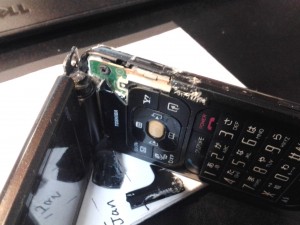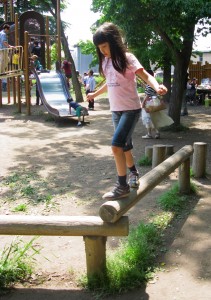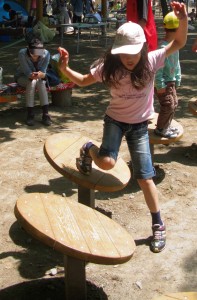When it comes to electronics and electrical and mechanical products, I’m not what you’d call brand loyal–although I do tend to prefer Canon cameras. Instead, I try to buy something that’s gotten good reviews, is of decent quality and comes at a reasonable price. I then use it and use it and use it until well beyond the “replace by” date.
The result is cars that fell apart soon after I sold them and a television, bought used, that we didn’t replace until the tube had failed so badly that the entire picture had become a green strip in the middle of the screen. We used the new TV until Japan switched to terrestrial digital format and we were told it wouldn’t work again. (Turns out, it did work, so we used it for another year until we replaced it with a Sony Bravia.) I used a laptop I purchased in 1997 until the backlight on the monitor died. Then I put an external monitor on it and used it as a desktop for another couple years. After it finally died, I used it as a stand for my new laptop.
The “new” laptop still works–well, it did until Microsoft sabotaged Windows XP and now I’m using it with Linux. I will use it until it doesn’t turn on. Only then will I think about getting rid of it–even thought it has, technically already been replaced.
This is partly the result of an “if it ain’t broke don’t replace it” attitude combined with a philosophy of “if you understand it, don’t buy something that will require lots of faffing about to configure and understand”. That’s all combined with my view of getting my money’s worth out of the purchase. (Yes, I am the guy who has 20 year old t-shirts that are now either pajama tops or house cleaning clothes.)
Even if something is old and broken, I’ll still use it as long as its basic functions will work. Case in point, the cellphone I bought in 2006. It still works as a phone and an alarm clock. Granted, it now has a few, um, cosmetic issues that require some care and duct tape:
A friend of mine would sell his computers every few years in order to recoup some of his money and put it toward a new computer. (However, he’s now become a Mac user which means he no longer has a soul and cannot be trusted.) I understand why he does this; however, I believe using it until stops working accomplishes the same goal. (Money isn’t everything, after all, although it does tend to dominate a lot of things.)
Despite all this, I am now in the market for a smartphone. I have to choose wisely though. That phone will be with me a very, very long time.




